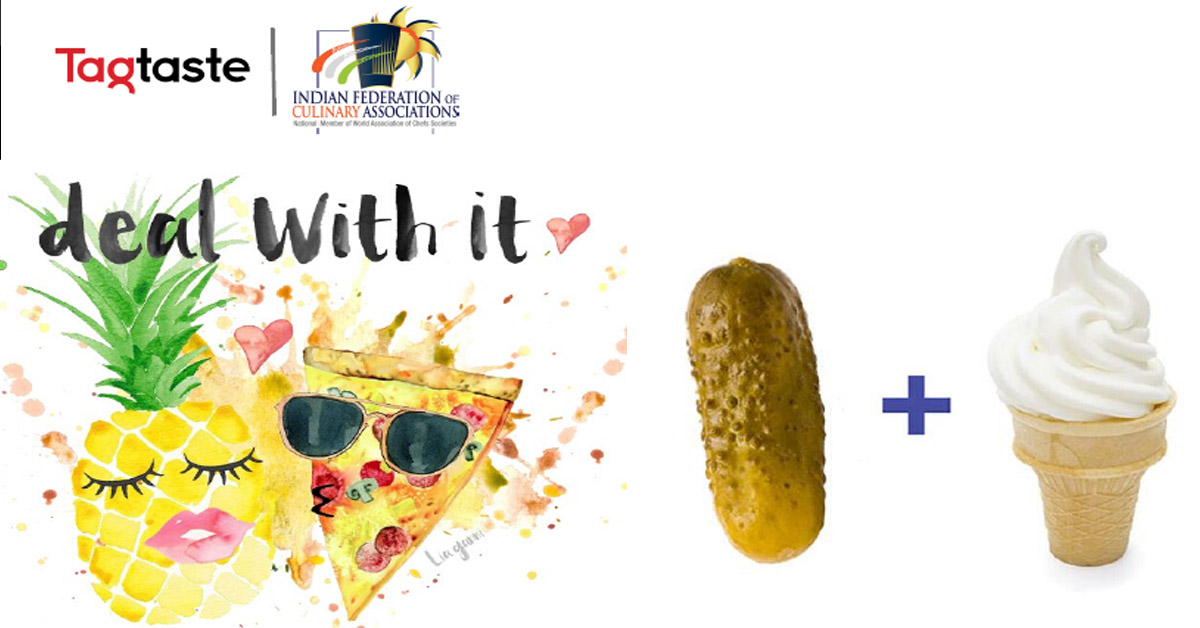
Posted by Admin on 26 May, 2020
It made us wonder: Is there a biological reason we chase our whiskey with pickle juice and prefer our apples with peanut butter (other than the fact that both combos taste awesome)? Turns out, there is legit science behind a lot our favorite flavor pairings.
This common pizza topping is a good example of two totally different tastes working together to maximize their potential. Really fatty foods, like ham and other meats, tend to leave your mouth feeling fatty, which is an undesirable state. Enter the pineapple. The fruit, which is naturally acidic, cuts through that greasy mouthfeel, creating a balanced result.
Salt is a very good suppressor of bitter tastes. Still, some pickleback aficionados reach for the brine less for the cover-up and more for the savory, almost meat-like aftertaste the whiskey/brine combo can leave behind.
Dipping French fries into a sweet and creamy ice cream has been many a five-year-old's first culinary revelation. But why does it taste so good? Thank the combo's unhealthy nature. Ice cream and starches have hung out together for ages (think cake and ice cream), so it's not wild to think that the pairing would taste just as good--if not better--if the starch were fried. Add a little salt and you've got the beautiful polygamous marriage of crispy, sweet, and salty.
Apples lack both salt and fat. And that's no fun. Adding the fats and salt found in nut butters provides a satiating element to water-based foods like apples, celery, and even carrots. This paring works particularly well with tart apple varieties such as Granny Smiths and Braeburns.
Caramel is made from heated butter and sugar. So it's delicious. But caramel can also be astoundingly sweet--almost too sweet. Adding a pinch of salt highlights the nutty character of the caramel, balancing that sweetness
Our natural attraction to the smell of Maillard reactions (also found in freshly baked cookies and bread) plays a role. As does bacon's other significant note: salt. Virtually all foods go better with even a tiny amount of salt, noting the reasons behind our love affair with sodium (and consequently bacon) are complex but can traced back to our basic need for the mineral and its ability to reduce bitterness and enhance Maillard reactions. Science!
Salt is a very good suppressor of bitter tastes. Dressings typically contain three components: fat, salt, and acid. In the case of this classic pairing, the blue cheese provides the fat and salt, and the pear does its part with the acid. So think of this combination as a kind of blue cheese dressing experience--just in a different form.
A staple of street corner fruit carts in Mexico, sliced fruit and chili powder put your taste buds into overdrive. The heat from the powder's capsaicin does two things : It arouses our sense of smell (an important factor in taste) and enhances the sweet acidity of the fruit.
Balsamic vinegar is used on lettuce-based salads without question, but it also works well with strawberries, which bring out the vinegar's natural sweetness. Drizzling olive oil might make this summertime salad even more enjoyable. You can use balsamic vinegar on fruit in the absence of fat. Although it's probably better with fat.